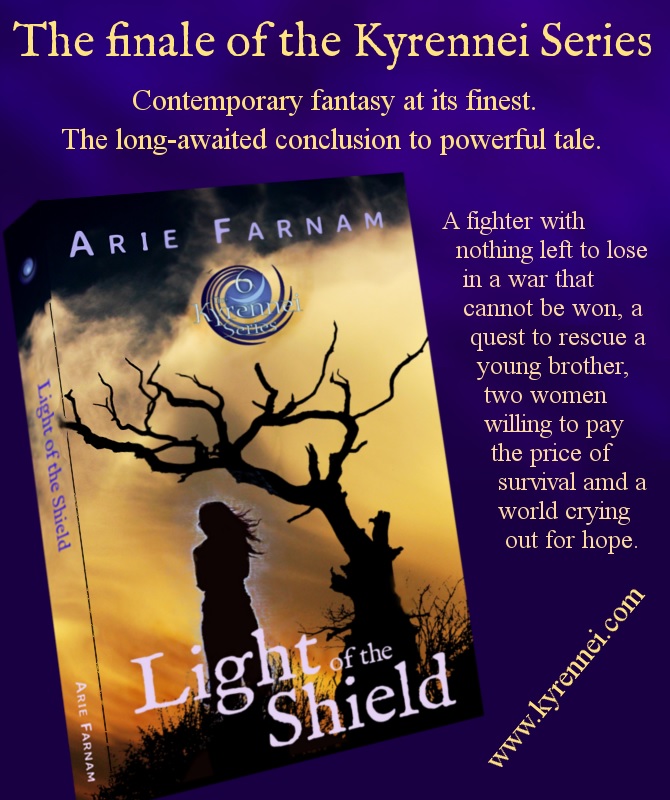Mismatch: A crucial concept of civilization and disability
/I’ve read four books over the past two years which have radically transformed my understanding of the human world. I highly recommend all of these to readers who may feel disjointed, hopeless, surreal, useless, bemused and/or displaced by current events and daily survival in our modern society. These books won’t make all your troubles go away, but they do help make sense of them.
This is the reading list—all both pleasant and absorbing reads, impeccably written:
Civilized to Death: The Price of Progress by Christopher Ryan
Sapiens: A Brief History of Humankind by Yuval Noah Harari, Derek Perkins, et al.
Cassandra Speaks: When Women Are the Storytellers, the Human Story Changes by Elizabeth Lesser, Xe Sands, et al.
Braiding Sweetgrass: Indigenous Wisdom, Scientific Knowledge and the Teachings of Plants by Robin Wall Kimmerer
Each of those books is utterly transformative in its own right, and there are far too many interesting points to cover in a single blog post, but there is one overall impression I have taken from this study of human nature and our relationship to both civilization and the natural environment. That is that virtually all humans today are “disabled” in the social-model definition of the term because we are living in a maladapted environment that does not support our physical and psychological needs as human organisms.
Image via pixabay - people walking through an airport
For those who are just waking up today, the social model of disability is the concept that disability is not a problem with the individual person but rather a mismatch between an attribute of a person and their human-designed environment.
Thus, a person with a wheelchair is “disabled” primarily because of stairs. In a society without stairs, using a wheelchair would likely be considered a quirk or at most a private health matter. A person with ADHD is “disabled” because of our society’s obsession with tasks that require sitting still and focusing one’s attention on random, functionally irrelevant things for long periods of time. In a hunter-gather society, ADHD may have actually provided advantages in the type of alertness needed to procure food, which is one theory about why it is so prevalent and so much more problematic today than it was decades ago. The further we get from a nature-centered lifestyle, the more society conflicts with ADHD brains.
Similarly, I am “disabled” because I can’t drive or make eye contact, while I am living in a society where driving is central to procuring food, shelter and all the other basic human needs and making eye contact is one of the foundations of social interaction. If I lived in a society. where everyone lived in dimly lit subterranean tunnels with either no transportation or collective transportation and making eye contact was culturally frowned upon, my vision impairment would likely be considered no more than a minor nuisance. And I might be sought after for jobs where no light was available.
Even today, if the electricity goes out at night and the house is completely dark, sighted people fumble around and become suddenly “disabled” by this environmental shift, unable to even walk safely across the floor without bumps to heads or shins. Meanwhile, I walk calmly into the kitchen, easily navigating around the chairs with a hand out the same way I always do, open the junk drawer and reach for the flashlights which I am used to finding by touch.
If read through the lens of this social model of disability, my book list shows that most humans are impacted negatively by the human-built societal structures of today in ways that are significantly disabling. Unfortunately, many of these problems impact people traditionally considered disabled even more heavily than the average person. I am not, therefore, arguing that “we are all disabled” and thus people with disabilities aren’t disadvantaged. Unlike the lights going out, this societal maladaptation does not confer any ironic temporary advantage on me. But I would like to introduce abled people to the idea of looking at their human-built environment from the perspective of its maladaptations which are causing widespread and preventable illness, disability and harm.
Just as I—as a visually impaired person in a sighted society—can find workarounds, obtain adaptive technology or change my environment to better suit my body’s specific needs due to my vision impairment, I am doing the same when it comes to my needs as a human organism—as best I can—in a society that is wildly maladapted for human organisms in general.
In the list, I put Civilized to Death first because that book comes the closest to stating the disabling nature of modern society outright, although the author doesn’t have a grounding in the social model of disability, so he missed this as a further application of his research.
What Christopher Ryan does say in Civilized to Death—and the other authors reiterate—is that human beings are sadly mismatched to the modern environment. Ryan uses the analogy of different types of zoos—some where animals are kept in depressing concrete cages versus those where animals live in a simulated wild environment. He makes the case that modern cities are to humans much like the concrete cages are to animals in zoos. They present unhealthy, stifling environments for humans who suffer physiologically and psychologically as a result.
Through several chapters packed with examples, Ryan demonstrates that modern humans are suffering from deep frustration and significant unnecessary health problems because of our built environment and our societal structures. From artificially enforced sleep patterns to the modern grain-rich diet that we did not evolve for, from bacteriological and toxin exposure that is making us far sicker than our hunter-gatherer ancestors to social structures that are psychologically toxic and oppressive, Ryan shows that modern society is disabling, sickening and killing most humans in ways that early human societies did not.
To clarify, as Ryan does at more length in the book, the reason that hunter-gatherers are reported to have had a lifespan of only about 35 years is because of statistical averages. The combination of a lack of surgeries and NICU incubators and the physically demanding environment meant that infant mortality was very high. Half the population died in infancy or early childhood, despite the relative lack of either infectious or systemic disease in their societies, while the other half of the population often lived to be 70, 80 or even older, often with much better health and a happier, more enjoyable life than the vast majority of us enjoy today. Hunter-gatherers spent far fewer hours procuring the bare necessities of survival and had more time for leisure and their families and friends.
IMAGE BY ALEX NAANIOU - BARE FEET WALKING ON A GREEN FLOOR AMID SHADOWS
Human beings as biological organisms are not well adapted to a stifling built environment, the modern diet, heavy work schedules or social structures involving more than about 150 people. Some human bodies have adapted to the modern diet better than others. But as that diet becomes more and more alien, more and more humans are being sickened by diabetes, heart disease, allergies, food sensitivities and immune disorders. This isn’t because there is “something wrong with these bodies.” It is because of a food environment that is ill-suited to those functional, otherwise-healthy bodies.
Similarly, many of our bodies and brains are breaking down or reacting poorly to the stress of 40- or 50-hour work weeks with another 20-30 hours of household and caregiving tasks piled on top. How many people with diagnoses of ADHD, clinical depression or anxiety disorders would have these disabilities or need medication for them, if they lived in a natural environment where procuring the necessities of life consumed only 25-30 hours per week? Not many, Ryan convincingly argues. Because humans lived with that level of ease for the vast majority of human history, this stress and its effects qualify as a socially constructed disability.
Most people don’t see these effects as “disability” because we all experience them, so the resulting general distress is “normal” and more severe effects in some individuals are seen as individual weakness, or weirdly, individual moral failings.
As I said at the beginning of this post, reading these books and realizing that much off what is wrong in today’s world is due to a mismatch between our human bodies and modern society will not fix these problems. Much of what is wrong can’t be fixed by individuals and some of it couldn’t be fixed, even if we could all agree and work together on it. Overpopulation is the worst of it. For us to live in a well-adapted environment, where our bodies could regain the physical health and general happiness that our hunter-gatherer ancestors enjoyed, the earth could only sustain a small fraction of today’s human population.
However, there are some things that you can do as an individual to adapt your environment for better health and happiness. Just as I, as a visually impaired person, can use various methods and technologies to make sighted society somewhat less problematic for me, I have also learned to change my environment to better suit my overall human body. I have stopped eating a typical modern diet and try to approximate the type of diet my ancestors would have eaten. This has resulted in an amazing resurgence of my health over the past two years.
I have also integrated more varied physical activity in natural environments into my routines. I utilize my brain’s natural propensity to want to remember and categorize plants as a brain boosting activity. I have stopped berating myself when I don’t work a 40-hour week at a traditional job and instead look at all the various methods I use to sustain my life as a form of modern hunting and gathering. That goes along with finding joy and meaning in things that do not require a lot of accumulation of wealth.
There are many things we can do in groups of family and friends as well. Realizing that we are hard-wired to connect in small groups, primarily in close circles of around 10 to 20 individuals, is a big help in understanding our various social problems. With modern technology today, we can in fact create a small clan of close connections and a larger circle of around 100 to 150 people who we connect with for reciprocity and the sharing of information. In such groups, we can develop mutually supportive relationships. If parenting is taken as a group effort—as it was for most of human history—for instance, rather than a task for the biological mother and father alone, a wide variety of current social problems are considerably alleviated.
There is no way to create a utopian society in which we return to an environment ideally adapted to our human bodies. Again, overpopulation precludes it. Also, our bodies are not physically prepared and our minds are full of the skills and information needed to survive in our current society and almost universally lack the information and skills needed to survive in a natural environment, even if one was available. But we can gain benefits by learning as much as we can about the natural environment and spending what time we can in it.
We can—just as people with other types of disabilities do—find work arounds, assistive technologies and possible environmental changes that will help and make life a lot healthier and more enjoyable.
Much of this insight has come through studying the social model of disability and through reading and rereading the books I listed by authors who are looking for a path forward for modern humans. What are the books—fiction or non-fiction—that have most inspired you recently? I would love to get a short list in the comments.






















